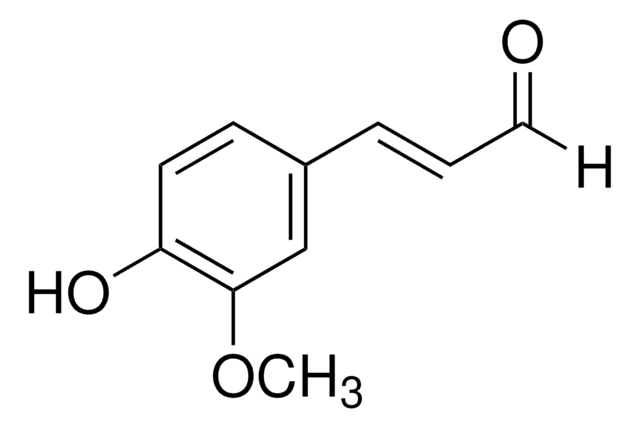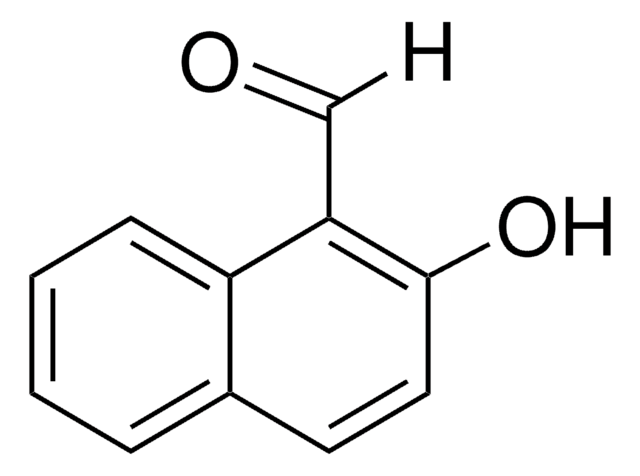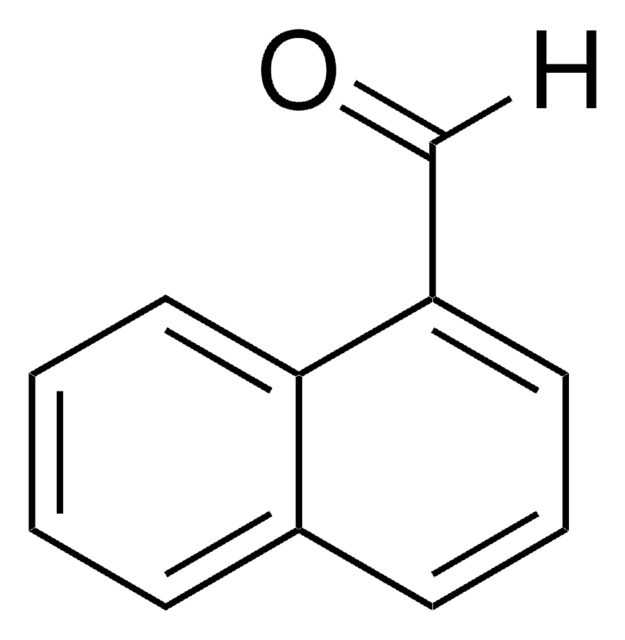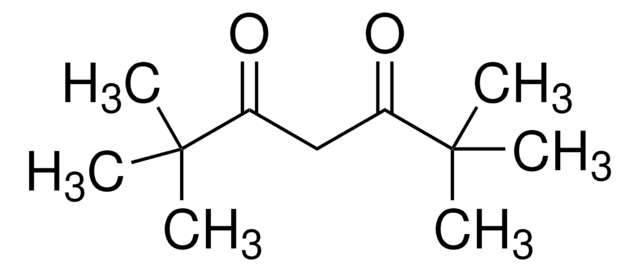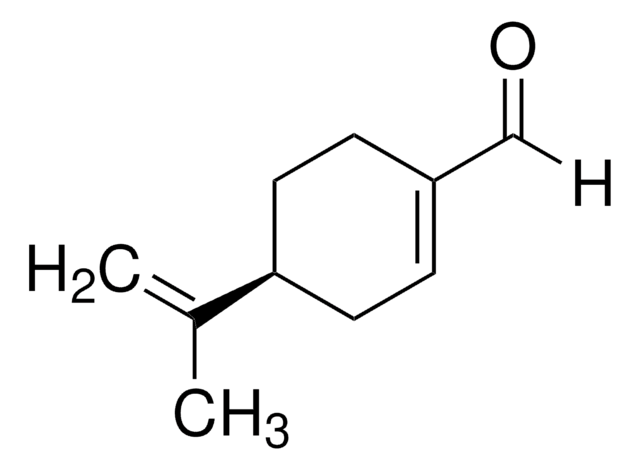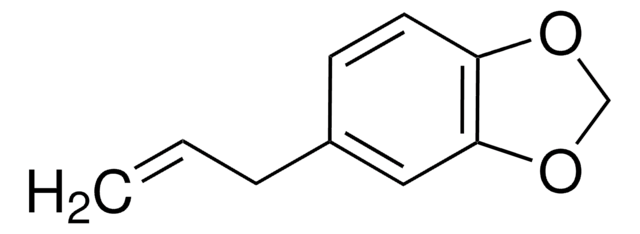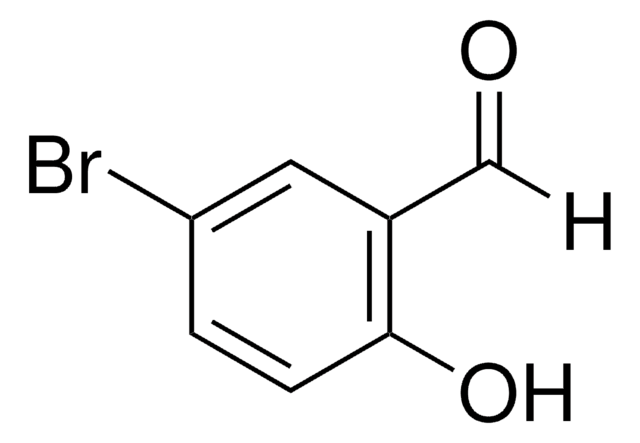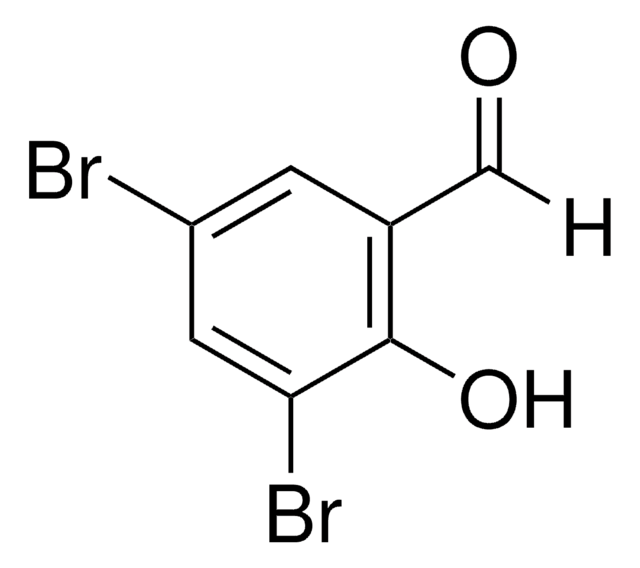289019
2-Methoxycinnamaldehyde, predominantly trans
96%
Sign Into View Organizational & Contract Pricing
All Photos(1)
About This Item
Linear Formula:
CH3OC6H4CH=CHCHO
CAS Number:
Molecular Weight:
162.19
EC Number:
MDL number:
UNSPSC Code:
12352100
PubChem Substance ID:
Recommended Products
Assay
96%
form
solid
bp
128-130 °C/0.6 mmHg (lit.)
mp
44-46 °C (lit.)
SMILES string
COc1ccccc1\C=C\C=O
InChI
1S/C10H10O2/c1-12-10-7-3-2-5-9(10)6-4-8-11/h2-8H,1H3/b6-4+
InChI key
KKVZAVRSVHUSPL-GQCTYLIASA-N
General description
2-Methoxycinnamaldehyde is one of the components of Cinnamomum cassia. It was identified using high-pressure liquid chromatography (HPLC) and gas chromatography–mass spectrometry.
Signal Word
Warning
Hazard Statements
Precautionary Statements
Hazard Classifications
Eye Irrit. 2 - Skin Irrit. 2 - STOT SE 3
Target Organs
Respiratory system
Storage Class Code
11 - Combustible Solids
WGK
WGK 2
Flash Point(F)
235.4 °F
Flash Point(C)
113 °C
Personal Protective Equipment
dust mask type N95 (US), Eyeshields, Gloves
Choose from one of the most recent versions:
Already Own This Product?
Find documentation for the products that you have recently purchased in the Document Library.
Tran Minh Ngoc et al.
Natural product communications, 9(4), 487-488 (2014-05-30)
A new coumarin derivative, coumacasia (1) and eight known compounds, coumarin (2), cinnamaldehyde (3), 2-methoxycinnamaldehyde (4), 2-hydroxycinnamaldehyde (5), coniferaldehyde (6), cinnamic acid (7), 2-hydroxycinnamic acid (8), and cinnamic alcohol (9), were isolated from the methanol extract of Cinnamomum cassia. Their
R Z Behar et al.
Toxicology in vitro : an international journal published in association with BIBRA, 28(2), 198-208 (2014-02-12)
In a prior study on electronic cigarette (EC) refill fluids, Cinnamon Ceylon was the most cytotoxic of 36 products tested. The purpose of the current study was to determine if high cytotoxicity is a general feature of cinnamon-flavored EC refill
Jian-you Guo et al.
Zhongguo Zhong yao za zhi = Zhongguo zhongyao zazhi = China journal of Chinese materia medica, 31(13), 1087-1090 (2006-10-20)
To observe the effect of 2-methoxycinnamaldehyde (isolated from fraction A of Guizhi Tang) on activity of COX and PGE2 release in rat cerebral microvascular endothelial cells (rCMEC) stimulated by IL-1. rCMEC were cultured, and identified by immunohistochemistry for von Willebrand
R Giordani et al.
Phytotherapy research : PTR, 20(1), 58-61 (2006-01-07)
The antifungal activity of the essential oil from Cinnamomum cassia, alone or combined with amphotericin B, a drug widely used for most indications despite side-effects was investigated. The composition of the oil was analysed by GC/MS and characterized by its
O B Samuelsen et al.
Xenobiotica; the fate of foreign compounds in biological systems, 16(9), 845-852 (1986-09-01)
The metabolism of o-methoxycinnamaldehyde (1.3 mmol/kg, intragastrically) was studied in rats. Identification of the urinary metabolites by g.l.c.-mass spectrometry and quantification by h.p.l.c. showed that the major metabolic pathway (approx. two-thirds of the dose) was oxidation to the corresponding cinnamic
Our team of scientists has experience in all areas of research including Life Science, Material Science, Chemical Synthesis, Chromatography, Analytical and many others.
Contact Technical Service
